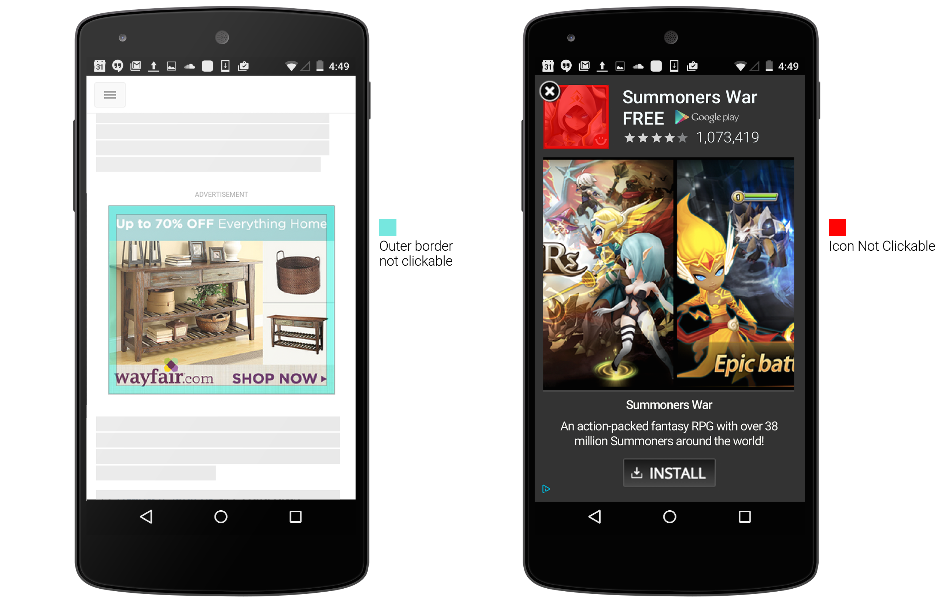Delivering relevant information to consumers – especially in moments of intent – sits at the very foundation of Google AdWords and our broader philosophy toward marketing and advertising. And as consumer behavior has shifted through the years, it’s always been Google’s objective to help marketers navigate the implications of those shifts. Our goal is that the current standards for relevance can be well understood and acted on.
There’s no question that today we’re facing a consumer behavior shift that has huge implications for how brands should reach and engage customers – especially on mobile. Already, more Google searches take place on mobile devices than on computers in 10 countries including the US and Japan.1 But it’s not just the fact that there is more mobile usage; mobile devices are actually changing the way people engage with brands – online and offline.
This change in behavior has fractured the consumer journey into hundreds of short decision-making moments. Consider these three figures:
- We’ve seen a 20% increase in mobile’s share of online sessions across the web in the past year.2
- Over the same time period, we’ve seen an 18% decrease in time spent per visit across the web.3
- In other words, as mobile accounts for more sessions, sessions are getting shorter overall. But there’s a lot happening in these sessions: In the past year, mobile conversion rates have also increased by 29%.4
In essence, we no longer research purchases in long dedicated sessions on a laptop or desktop. Instead, we reach for our devices in the moment, we access information faster than ever before, and as a result we make more informed decisions… more quickly. In fact, 60% of online consumers say they are making purchase decisions more quickly because of online research now compared to a few years ago.5
For example, have you ever stopped in the middle of a conversation to look something up about what you just heard? Sixty percent of smartphone users report having done the same thing.6 And 66% of smartphone users turn to their smartphones to learn more about something they saw in a TV commercial.7 Overall, 65% of online users say they are looking up information online more now compared to a few years ago.8
Have you done a quick search to find the nearest coffee shop? Eighty-two percent of smartphone users turn to a search engine when looking for a local business.9
Or do you turn to your phone to get instructional help, say, while in the midst of doing a home repair? Ninety-one percent of smartphone users turn to their smartphone for ideas while doing a given task.10
Do you use your phone inside a shoe store to inform which running shoes to get? You’re not alone: 82% of smartphone users consult their phones while in a store deciding what to buy.11 And thanks to the rise of mobile devices, decisions are happening in more unusual places, too: 39% of consumers report having made a purchase in their kitchen, another 28% in their car.12
These are just a few examples of what we call “micro-moments” – those intent-rich moments when we want to learn, find, do or buy something, and we take immediate action – increasingly on our phones. And in those moments, we have higher-than-ever expectations for the ads, content and experiences we get back. Whatever need we have in that moment, we want it addressed right, and right away.
To help marketers better understand this consumer behavior and its implications, today we’re launching new qualitative and quantitative insights at thinkwithgoogle.com/micromoments.
This initiative presents a collection of stories of real people and their real micro-moments – like when Mabel sought hairstyle inspiration while getting ready, and when Giana’s in-store research convinced her to buy a higher-priced medicine. Through these vignettes, and the related data, insights and content, we hope to shed light on why the intersection of consumer need and consumer context is at the heart of the mobile opportunity.
We hope you enjoy the stories and insights. This is just the beginning. Over the course of the coming months we’ll provide strategies and examples of how to connect the dots between intent and context, in order to win all the moments that truly matter.
Posted by Matt Lawson, Director, Performance Ads Marketing
1 Google internal data, April 2015
2 Google Analytics aggregated data, 2014-2015 for April 1-14, US
3 Google Analytics aggregated data, 2014-2015 for April 1-14, US
4 Google Analytics aggregated data, 2014-2015 for April 1-14, US
5 Consumers in the Micro-Moment, Wave 2, Google/Ipsos, US, May 2015, n=1,005, based on internet users
6 Google Consumer Surveys, US, May 2015, n=1653
7 Google Consumer Surveys, US, May 2015, n=1243
8 Consumers in the Micro-Moment, Wave 2, Google/Ipsos, US, May 2015, n=1,005, based on internet users
9 The Consumer Barometer Survey 2014/2015, US, n=1,000, based on internet users
10 Consumers in the Micro-Moment, Google/Ipsos, US, March 2015, n=5,398, based on internet users
11 Consumers in the Micro-Moment, Google/Ipsos, US, March 2015, n=5,398, based on internet users
12 Google Consumer Surveys, US, April 2015, n=1509























.png)